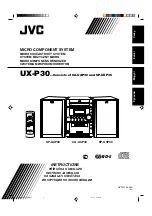
Antenna Placement
No matter what type of antenna is used, use care in positioning and mounting. In all cases, a
clear and unobstructed line-of-sight path between the receiving antenna and the transmitter is
required.
The receiving antenna may be concealed behind fabric, thin plastic, acoustic tile, and thin
plywood without significantly affecting performance. However, close proximity to metallic
objects must be avoided; objects such as lighting fixtures, scaffolding, electrical cables,
metal structural members, aluminum window frames, and equipment cabinets. Whip and
dipole antennas require at least a 5-inch (0.1-m) minimum spacing from metal surfaces.
Other types of antennas may require greater spacing. The manufacturer’s recommendations
should be followed when using yagis and other types of specialized antennas.
Frequently, the antenna must be located some distance from the desired location of the
receiver. In this case, long coaxial cables unavoidably reduce the available signal strength
and detract from system performance. It is not recommended to use long cables to connect
antennas to UHF receivers. Consult the Vega factory when cable runs over 25 to 30 feet (8
to 10m) are necessary.
Troubleshooting
Most users of Vega equipment enjoy years of trouble-free operation from their wireless
microphones. However, as with all electronic devices, problems may be encountered
eventually. If you have trouble with Vega equipment within the first year of operation, it
will be repaired under warranty. Service for older units may also be obtained from Vega;
contact the factory or your sales representative for information.
Most difficulties with Vega wireless microphones are not due to equipment failure. Vega
equipment is fully tested before leaving the factory. Usually, problems are due to equipment
application.
The following paragraphs describe the most common problems. If you are having
difficulties, please review this information and take any necessary corrective action. If you
still experience difficulties, contact the Vega factory or your sales representative.
Often, the problem can be resolved by phone, avoiding downtime for unnecessary returns.
However, should repairs be necessary, Vega will promptly correct the problem and return
the unit. Return of both transmitter and receiver is recommended, allowing us to perform a
complete checkout and test of the entire system. This can be especially helpful for elusive or
intermittent problems.
Battery
The most common problems with wireless microphones are are caused by weak transmitter
batteries. Vega recommends using only new Duracell MN1604 alkaline batteries in the
miocrophone transmitters. Despite advertising claims, no other batteries tested by Vega
provide equal life and equivalent reliability. Others will work, but battery life may be short
and current inadequate.
Exhausted batteries will cause many problems, including distortion, audible squeals and
howls, poor range, and off-frequency operation. Vega recommends the battery be checked
prior to each use, and that it be replaced if there is any question about its condition.
It is also good practice to replace batteries with new ones when any system problems occur,
since a low battery may affect system operation in subtle ways.
Wireless Microphone System
15
Содержание U2020
Страница 1: ...Vega U2020 UHF Wireless Microphone System V0990104 Rev D ...
Страница 7: ......
Страница 19: ...Claims Wireless Microphone System 19 ...






































